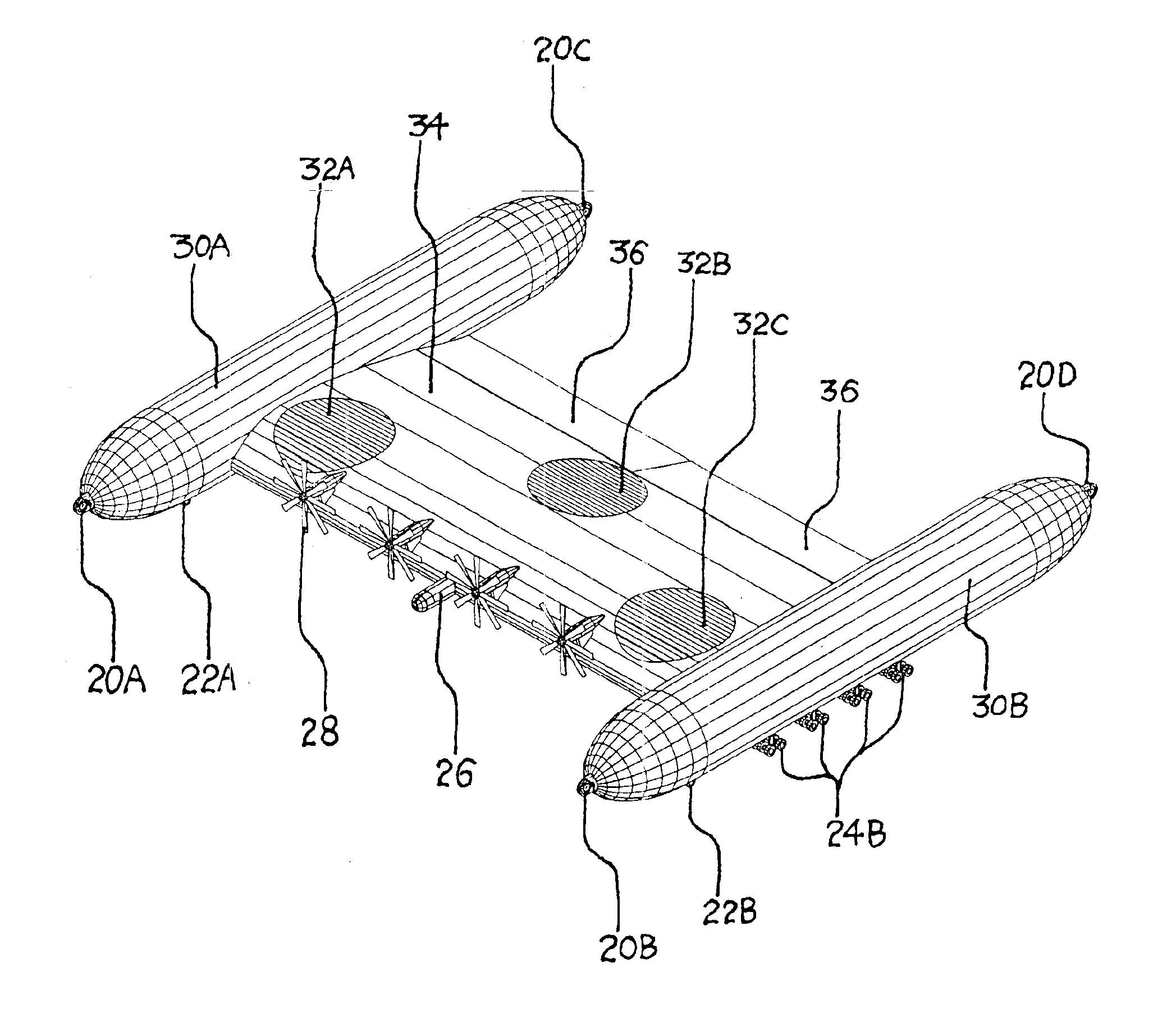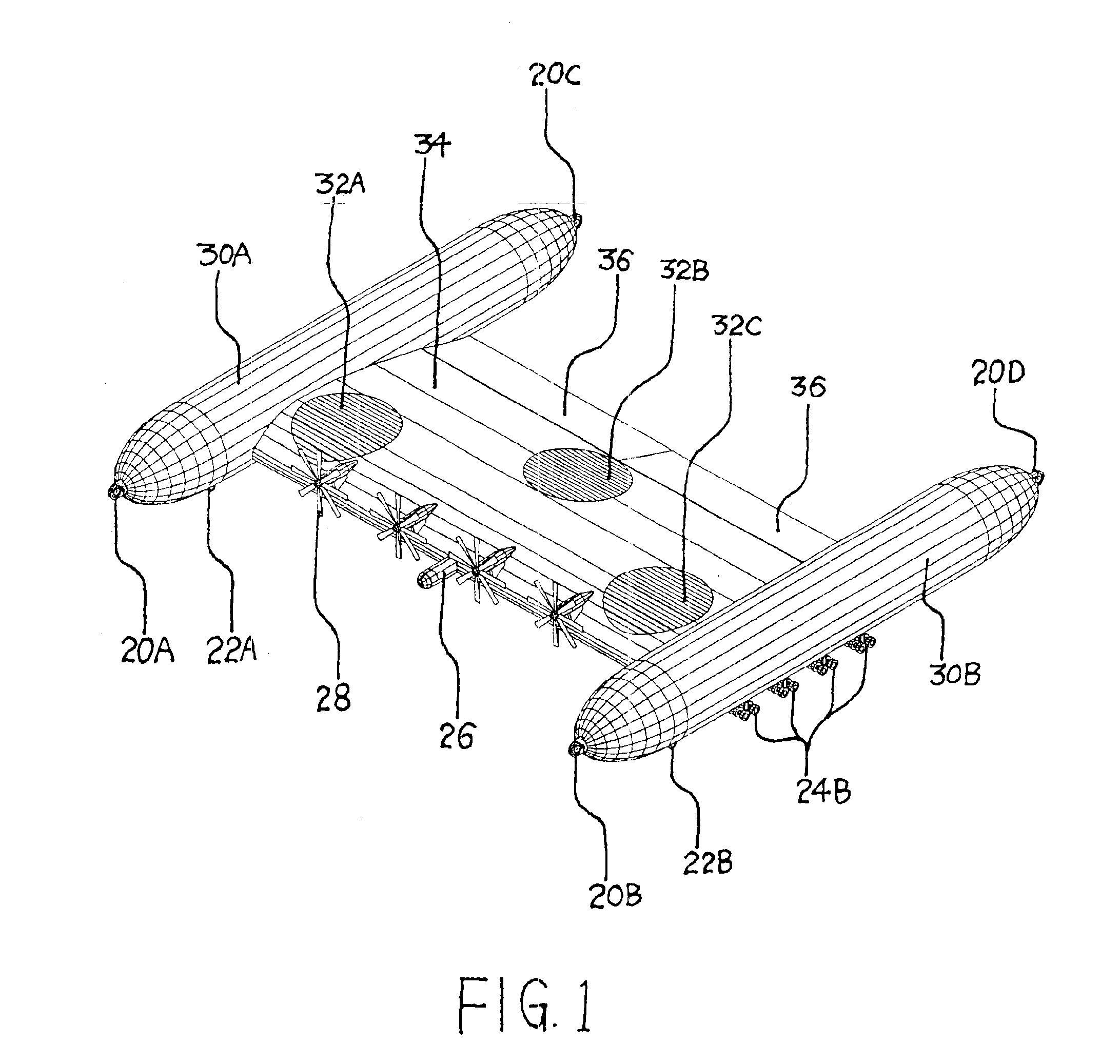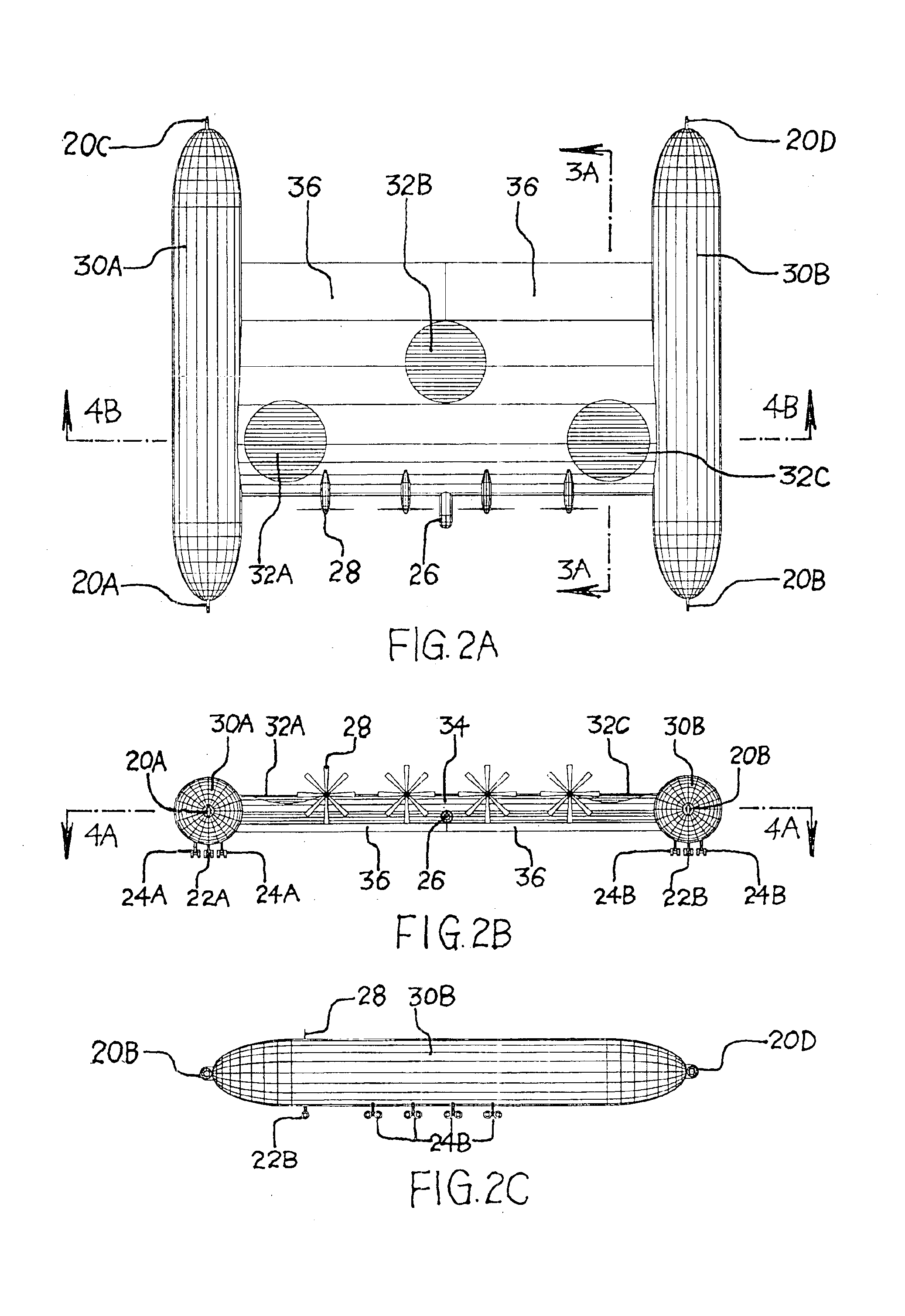Yet, no existing aircraft can cost-effectively deliver substantial
payload up to hundreds or even thousands tons of payload over a long distance to a place that only has a short, rough, and
dirt runway or does not have a runway at all.
However, a major shortcoming of the tube-and-wing design makes it technically difficult to build even bigger aircraft.
This causes high level of stress over the wing structure.
The stress becomes even greater for aircraft with heavy payload and makes the tube-and-wing design structurally inefficient for aircraft with substantial payload.
In addition, transportation aircraft of tube-and-wing design are very difficult to realize vertical and / or short take-off and landing (V / STOL), especially for aircraft of heavy payload.
Although Boeing C-17 can take off from a 2,315 meters (7,600 feet) long rough,
dirt runway, it can only carry 72.6 tons (160,000 pounds) of payload to achieve this take-off distance and is very expensive at an average unit price of $198 million (1999 dollars).
The large
wingspan makes a large BWB aircraft difficult to move around in small or crowded airports.
This weight makes a big BWB aircraft of substantial payload either has to carry large and heavy landing gears to move on unprepared runways or be restricted to take-off and land in a limited number of big airports.
Thirdly, BWB aircraft with heavy payload are difficult to achieve V / STOL.
In addition, the huge size and buoyant nature of lighter-than-air aircraft make it difficult to control under windy weather conditions.
In addition, they are difficult to control under windy weather conditions.
However, existing inventions cannot utilize static and
aerodynamic lift to a degree that the means for generating both kinds of lift can effectively and efficiently benefit from each other and the aircraft can be easy to control, cost-effective to operate, and easy to develop and build.
This design is not efficient in horizontal flight because its lifting body makes high induced-drag while generating
aerodynamic lift.
In addition, an aircraft of this invention is very difficult to control.
There are simply too many functions for the tilt prop-rotors to perform in every portion of flight and such a propulsion
system must be complex, costly to develop, and difficult to operate and maintain.
Finally, both the two kinds of propulsion systems of this invention make an aircraft of this design structurally inefficient.
The large number of lift fans not only add a significant amount of weight to the aircraft but also increase the complexity of both the propulsion and flight control systems.
Such a big number of lift funs and the complexity of the propulsion and control systems make the aircraft structurally heavy, costly to build, and difficult to maintain.
Such a concentration of load makes the four tilt-able outriggers structurally heavy.
Such a structure arrangement also adds weight to the aircraft structure.
For the same reasons mentioned above about the tile-able prop-rotors of U.S. Pat. No. 5,823,468, the four tilt-able propulsion units of invention U.S. Pat. No. 6,286,783 B1 make the aircraft difficult to control and structurally inefficient.
This design still has high induced-drag during horizontal flying because its semi-rigid lifting body has low aspect-ratio.
The design is structurally inefficient similar to a tube-and-wing aircraft because a big portion of load of the
fuselage should be transferred to the middle portion of the wing and the wing structure should transfer the wing lift to the middle wing as well.
The design also does not have VTOL capability.
This design is structurally heavy and difficult to control because first, the large number of rotors need complicated
power transmission and control systems; second, installing rotors on the
trailing edge, the thinnest and slenderest portion of the wings, makes the wing structurally heavy.
Although this design makes a tube-and-wing aircraft have a smaller wing than conventional tube-and-wing aircraft, the structural disadvantages of tube-and-wing design remain.
In addition, the design does not have VTOL capability.
This design has high drag during flying because its non-lift-generating freight compartment has a flat and long shape, which has big
wetted area for generating drag.
The design also does not have VTOL capability.
However, the concentration of load onto a few number of rotor hubs makes helicopters structurally inefficient when carrying substantial payload.
In addition, the fact that a significant portion of
engine power is consumed to generate vertical lift during horizontal flight makes helicopters economically inefficient when flying over a long distance.
However, these attempts cannot resolve the above-mentioned structural
disadvantage of load concentration because the rotors still generate all the lift during VTOL.
Tilt rotor aircraft like V-22 has the same structural
disadvantage as helicopters, which is a significant shortcoming when carrying substantial payload.
In addition, a
complex control system is required to balance the aircraft while tilting and controlling the rotors.
This
mechanical system is heavy and increases the cost and maintain burden of the aircraft.
 Login to View More
Login to View More  Login to View More
Login to View More 


